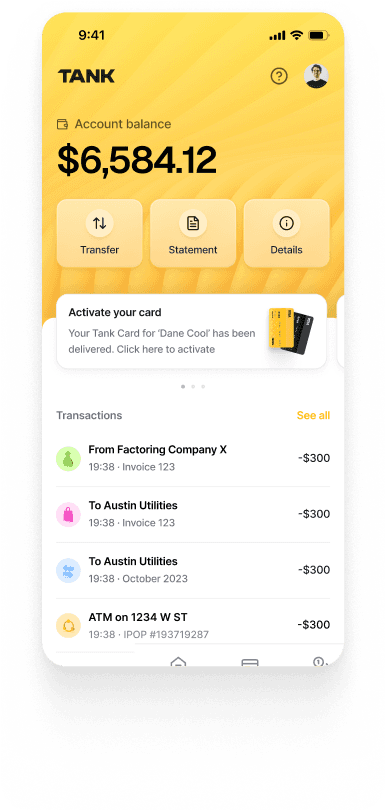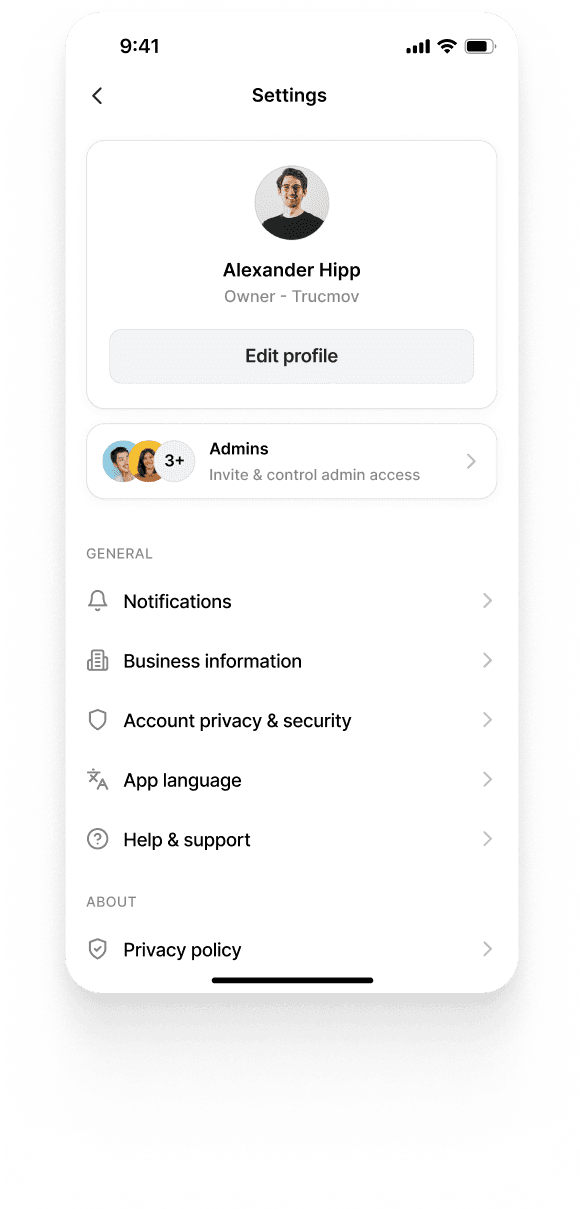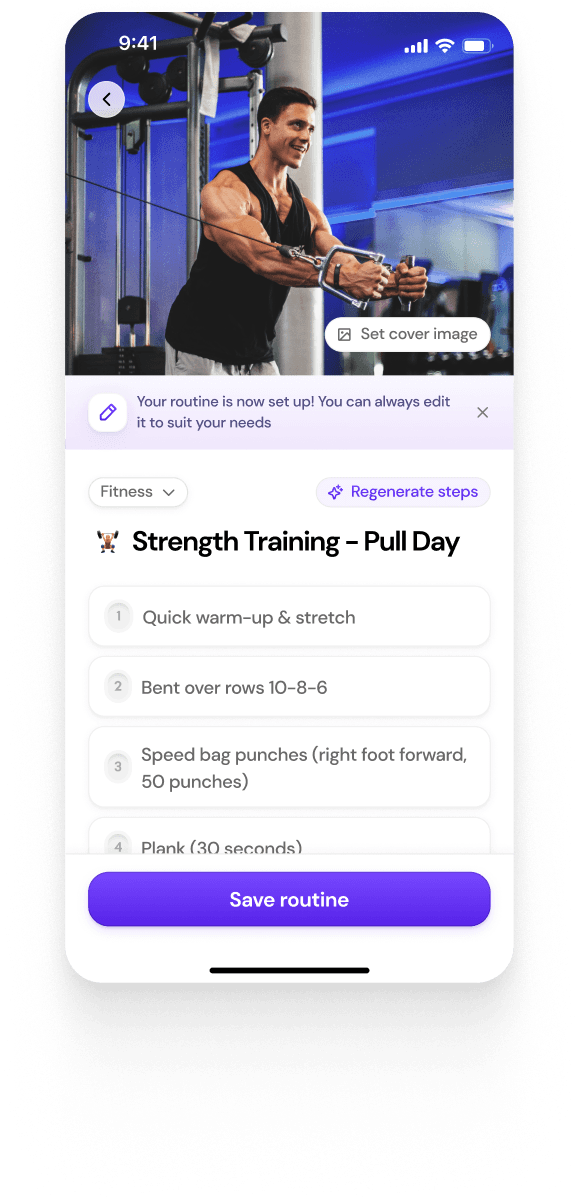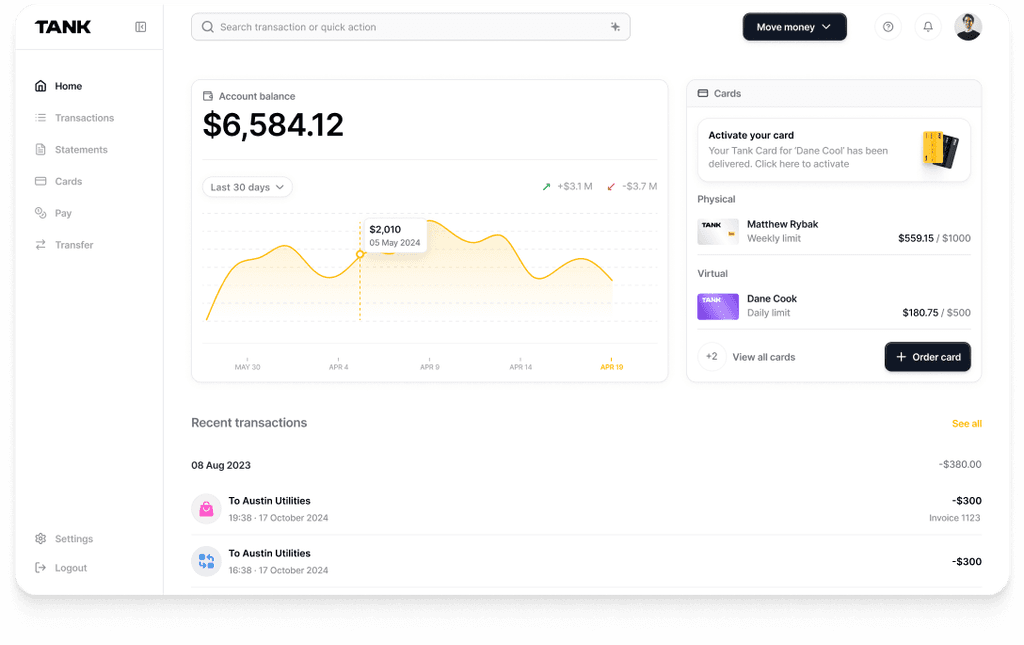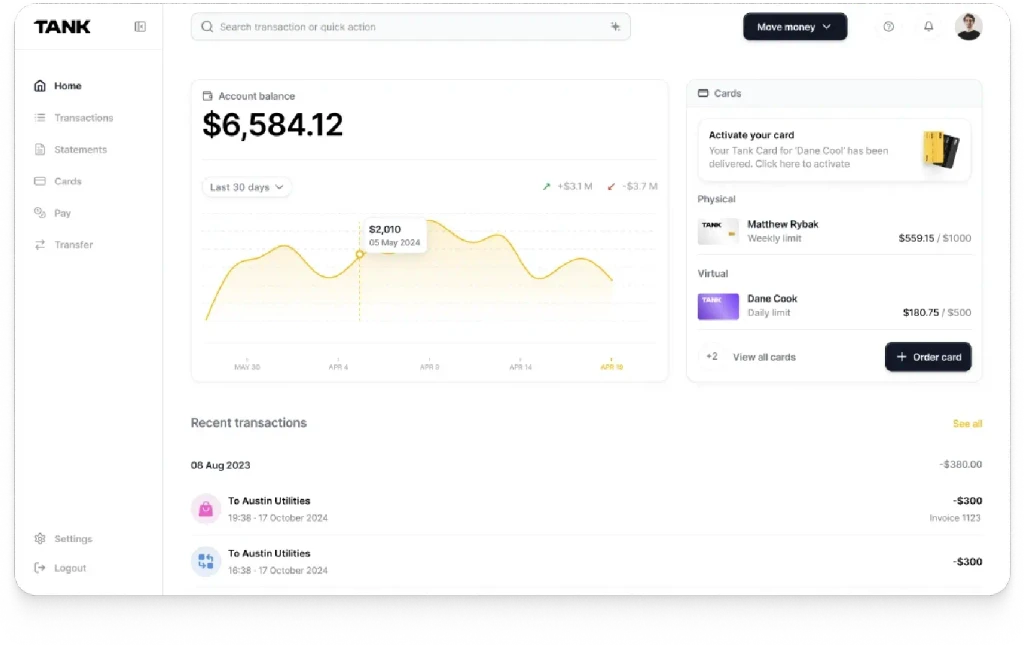Optimizing AI Infrastructure Costs: Strategies for Business Stakeholders
Summary
AI offers transformative value but brings escalating infrastructure costs in compute, storage, networking, energy, and talent. Startups must balance cloud vs. on-prem deployments, optimize training vs. inference workloads, manage data and transfer costs, and adopt FinOps strategies to scale sustainably without compromising innovation.
Key insights:
Cloud vs. On-Prem Trade-offs: Cloud offers agility but can get expensive at scale; on-prem becomes cost-effective for stable, high-volume use.
Training vs. Inference Costs: Training is a one-time cost; inference is recurring—each requires distinct cost-saving tactics.
Data Management Matters: Storage tiers, federated access, and efficient pipelines can cut costs as data volumes grow.
Networking & Transfer Fees: High-performance interconnects and edge computing help minimize latency and data egress charges.
Energy Efficiency is Strategic: Power and cooling dominate OpEx; smarter hardware, scheduling, and green practices reduce spend.
Talent Constraints & Tools: Scarce AI talent drives costs—lean teams benefit from automation, upskilling, and managed services.
Introduction
Artificial intelligence (AI) offers transformative potential, but unchecked infrastructure spending can quickly erode its benefits. Every AI implementation has computing, storage, networking, and energy expenses that increase with size, from training models in the data center to executing real-time AI services. While businesses enthusiastically adopt AI, experts caution that budgets are tight and unforeseen costs are possible. Both cloud providers and consulting firms place a strong emphasis on cost visibility and control. For instance, Google Cloud states that cost minimization is "both a financial and strategic necessity" because "AI requires computing resources," and costs can vary greatly depending on scale and complexity. According to Deloitte interviews, cloud AI workloads may also become "budget-breaking" as they expand, so many businesses are reconsidering their hybrid-cloud plans.
In this insight, we explore how startups and growing companies can manage AI infrastructure spending without sacrificing innovation. We look at the cost of powering and cooling AI systems, compare cloud and on-premises computing, and take networking and storage requirements into account. The impact of talent and operational procedures, as well as the cost distinctions between model training and inference, are also covered. Throughout, we emphasize doable tactics that can aid in cost containment.
Cloud vs. On-Premises Compute: Finding the Right Mix
1. Cloud
Cloud computing offers unmatched scalability and pay-as-you-go flexibility, which is why many AI projects start in the cloud based on existing public/private footprints. The cloud offers managed services for model building and deployment, and it enables teams to spin up GPUs or TPUs for training without having to pay for them upfront. Nevertheless, several experts warn that the variable cost model of the cloud can become costly when scaled up. According to Deloitte, as AI workloads increase, there is frequently "an inflection point where the public cloud may become prohibitively expensive" following initial agility. In reality, it is recommended that businesses keep an eye on their cloud spending and think about a cutoff point for moving to owned infrastructure. For instance, according to Deloitte interviews, it might be more cost-effective to switch to on-premises or dedicated hardware when a project's monthly cloud cost exceeds about 60–70% of the comparable hardware purchase price.
2. On-Premises Infrastructure
On-premises infrastructure, by contrast, requires significant upfront investment in servers, GPUs, and networking gear, along with ongoing facilities costs. However, the initial investment in hardware can eventually pay for itself if AI demands are consistent and predictable. Although high-performance GPUs, such as NVIDIA's most recent Blackwell series, can cost tens of thousands of dollars each, an HPC infrastructure vendor points out that businesses with demanding, ongoing applications can find that their on-premises total cost of ownership (TCO) is lower than their cloud counterpart. In these situations, teams can control utilization more effectively (e.g., by only performing jobs during off-peak hours to save energy) and avoid paying idle capacity rental costs on an hourly basis.
3. Hybrid Approach
The optimal approach is often hybrid. While steady-state or sensitive workloads eventually migrate to private data centers or colocation racks, early-stage and bursty workloads can reside in the cloud, where companies "just pay for what they use" and can scale up or down quickly. Indeed, leading companies in the field report hybrid "triplet" installations (on-premises plus multi-cloud) that combine regions and capacity for latency and scale. Planning for capacity development and appropriately sizing cloud resources (using reserved or spot instances for discounts) is crucial in hybrid settings. For instance, AWS advises estimating AI project costs in advance using cloud price calculators and establishing expenditure alerts to notify teams when usage reaches predetermined budgetary limits.
In summary, startups should begin with cloud for flexibility but have a plan for when to repatriate heavy workloads. Monitor data such as GPU usage and total cloud expenditure in comparison to fixed-cost options. As suggested by Deloitte, always match infrastructure to the actual business need (e.g., performance, latency, or compliance) rather than over-provisioning, and be prepared to switch to edge or on-premise computing if cloud bills "reach a predefined level.
Hardware Efficiency: Training vs. Inference
Specialized AI hardware and efficient software architectures can greatly affect costs. Higher performance and improved energy efficiency are provided by the regularly released new AI accelerators (GPUs, TPUs, NPUs, and FPGAs). According to Deloitte, for example, greater information may be processed "while boosting energy and cost savings" thanks to advancements in processors and architectures. A training run can be shortened by days or weeks by upgrading to a more capable GPU, which eventually results in cheaper cloud costs or power consumption. Operating costs are directly decreased in production by inference efficiency (throughput per watt). According to Nvidia, the cost of supplying a GPT-3.5-level model has decreased by more than 280× between late 2022 and late 2024 as a result of optimizations and newer hardware.
Yet buying every new chip as soon as it launches is not always necessary. Deloitte warns against "hype" because many businesses discover that ongoing efficiency improvements can extend the useful life of current gear by a few years. In reality, businesses frequently strike a compromise between budget cycles, performance requirements, and hardware refresh cycles. Older GPUs or even CPUs may be enough for sporadic tests or smaller models, but upgrading can be warranted for essential tasks (real-time inference, high-volume training)
The distinction between training and inference is also key. The cost of training an AI model is usually one-time; however, it can occasionally be repeated. The model is trained over hours or days using massive computing clusters. Conversely, inference is a continuous expense that is incurred each time the model is utilized. Nvidia notes that while "every instruction to a model creates tokens, each of which incurs a cost" during inference, "pretraining a model…is effectively a one-time expense." To put it another way, a training task on a large GPU cluster could cost thousands of dollars (or more) for a week, but if traffic is heavy, feeding that model to customers daily could end up costing much more overall. For example, an analysis estimates that 1 billion queries at 0.5 watt-hours each would consume about 182,500 MWh per year, implying significant electricity bills alone.
This means optimization opportunities differ: for training, teams can schedule jobs during off-peak hours, use spot/preemptible instances (cloud VMs offered at steep discounts), and optimize code to reduce computation. Efficiency per query is the main goal for inference; methods such as heavier models, batching numerous requests, quantization (using 16-bit or 8-bit math), and model compression can reduce costs. Cloud expenses can also be significantly decreased by running inference on more energy-efficient hardware or even on-device (edge AI). Businesses can "move critical AI applications away from the cloud and process AI locally" since some next-generation gadgets (PCs, phones, and robots) have built-in AI chips. Intelligent edge computing has the potential to reduce central server expenses and offload some of the strain associated with inference (at the expense of more complicated implementations).
Data Storage and Management
1. Storage
AI workloads typically involve massive datasets, whether for training or real-time features. One significant cost driver is the storage and management of this data. Even low-cost cloud storage adds up over time. According to one research, the annual cost of keeping 40–80 TB of data on the cloud can range from $16,000 to $32,000 (around $400 per TB annually). A comparable on-premise storage system, on the other hand, may cost $30k up front and about $10k in maintenance each year. Early on, the cloud is frequently more cost-effective for companies due to its inherent resilience and lack of capital expenditure. However, businesses may switch to private storage as data quantities increase to reduce long-term expenses.
2. Data Management
Beyond the raw storage price, the way data is managed also affects expenses. Conventional data lakes gather and store data, but AI may find this to be expensive and cumbersome. According to Deloitte's research, innovative "federated" ways are emerging, where systems retrieve and process data as needed from their location rather than duplicating it all into a central repository. Because only the required data slices are ever saved or transported, this can significantly reduce storage costs. Additionally, it lowers the cost and risk associated with centralizing sensitive data. In actuality, this may mean querying pre-existing databases and archives via a data mesh or virtualized data layer as opposed to replicating them in a huge lake. The key takeaway is to avoid paying to store or move petabytes of data that are never used; archive or delete unused data, and consider tiering (e.g. colder, cheaper object storage for old records).
3. Data Pipelines
Data pipelines and formats matter too. Waste can be reduced with effective extract-transform-load (ETL) procedures. For instance, the final dataset size and, thus, the storage and computation requirements can be decreased by processing and cleaning the data before training. To avoid constantly retrieving the same raw data from the cloud, some businesses create artificial or augmented data locally. Engineers should also keep an eye on transfer costs (see Networking below) when cloud data transfer is required (for example, transferring training sets into GPU instances).
4. Vendor Pricing Models
Importantly, vendors’ pricing models add another dimension: many charge separately for storage (hot vs. cold), database services, and data transfer. Startups ought to become acquainted with these line items. Many cloud services, for example, charge per gigabyte per month for object storage in addition to fees for requests or data retrieval. Even seemingly inexpensive storage tiers can mount up as data volumes increase. Teams with a tight budget usually clean out superfluous copies regularly and archive rarely visited data to the lowest-cost tier. According to Deloitte, teams can choose when to invest in new storage or remove outdated data by regularly reevaluating "how much data is stored" concerning model demands.
Networking and Data Transfer
1. Networking
High-speed networking is an invisible pillar of AI infrastructure. Fast data feeds from storage are essential for GPUs and AI accelerators; insufficient bandwidth might result in reduced performance, which is a hidden cost. For big clusters of GPUs to share data with minimal latency, businesses may need to invest in specialized interconnects (Infiniband, RDMA over Converged Ethernet) within data centers. Although it costs more to develop this high-performance network, it allows distributed inference and directly speeds up training tasks, saving computation hours. A component of contemporary "AI-optimized" data centers is effective network architecture.
2. Data Transfer
Equally important is the cost of moving data between systems or across the internet. Data egress (transfer out of the cloud) and occasionally intra-cloud bandwidth are charged by cloud platforms. These charges may be quite high. For instance, according to one provider's pricing, it can cost between $800 and $900 to transport 10 TB of data from a cloud server to the internet. (In actuality, costs tend to decrease per gigabyte as volume increases, but 10 TB to 50 TB can already reach monthly sums of thousands of dollars.) These fees should be included in expenses if a startup's AI solution supports
3. Cost Reduction Strategies
There are clear strategies to reduce transfer expenses. Content Delivery Networks (CDNs) or edge caches can serve repeated data (like model updates or video frames) from geographically closer nodes, dramatically cutting cross-region traffic. Inter-region egress fees can also be avoided by selecting a cloud area close to the majority of customers or other services. In hybrid setups, businesses frequently create private linkages (direct-connect services) between cloud providers and on-premises or edge sites; these are essential for big, continuous data flows and can be less expensive per gigabyte than public internet egress.
When processing streaming data or telemetry (common in robotics or IoT-enabled AI), keeping computation close to the data source makes sense. To reduce the usage of wide-area networks, edge nodes in retail establishments or regional offices, for instance, can do inference locally and just return aggregate findings. Retailers such as Walmart are constructing tens of thousands of edge computers on-site to manage local AI inference at the data-gathering point. When latency or data transmission is the bottleneck, these edge installations pay off, but they come with their management burden.
In summary, while allocating funds for AI networking, take into account both the anticipated amounts of cross-system traffic and the data center switchgear. Use caching and compression, keep a careful eye on egress utilization, and design for locality (compute near data). Tools for cloud monitoring, such as AWS Budgets and Cost Anomaly Detection, might be useful in warning teams of increases in networking fees. Teams can prevent surprises like a brief performance test that results in significant data transfer expenses by remaining alert.
Energy and Sustainability
1. Energy
Power and cooling are often the single largest operational expense of heavy AI infrastructure. A machine learning lab or AI data center uses a lot of electricity all day long since GPUs and ASICs draw kilowatts each while they are under stress. According to industry analysts, data centers currently use about 2% of the world's electricity, but by 2030, the amount might double due to increased AI workloads. According to Deloitte, if efficiency improvements are not made, AI-driven data center usage could increase to 536 terawatt-hours (TWh) globally in 2025 and 1,000 TWh by 2030.
2. Sustainability
For companies, this trend implies rising utility bills and also reputational pressure for sustainability. Energy-efficiency measures are sought after by prudent organizations. For example, selecting hardware with better "teraflops per watt" (performance per unit energy) reduces power consumption for a certain computation activity. Because liquid cooling or immersion cooling systems remove heat more effectively than air, they can further reduce cooling expenses. To save money and lessen their carbon impact, Deloitte recommends innovative data center designs that use waste-heat recycling, "advanced liquid cooling," and computing close to renewable energy sources. Smaller businesses should at least take into account high-efficiency power supplies and cooling units while constructing private AI servers, even though these projects are frequently applicable to hyperscale data centers.
It is also worth noting that with on-prem systems, companies can optimize workload scheduling to flatten demand. Non-urgent training tasks, for instance, might be completed on the weekends or in the evenings when electricity costs may be reduced, which is rarely feasible with a pay-as-you-go cloud model. Cloud providers are rapidly implementing "sustainable computing" measures, such pledging to use energy that is carbon neutral or providing spot instances that are powered by excess renewable resources. These services lessen expenses and their influence on the environment, but they may make scheduling a little more difficult because spot virtual machines can be repossessed.
Finally, keep in mind that energy costs vary by region. Globally dispersed businesses occasionally locate AI workloads in areas with a lot of solar or hydro power, sacrificing any latency in exchange for more affordable and environmentally friendly electricity. It's a good idea to keep an eye on your infrastructure's power usage effectiveness (PUE) in all situations. A PUE of 1.5 or less suggests an efficient facility (i.e., only 50% overhead for cooling), whereas a PUE of 2.0 shows that every compute watt necessitates an extra watt for cooling. As AI grows, ongoing attention to cooling and energy can therefore result in meaningful cost reductions.
Talent and Operational Costs
Behind every AI system is the team that builds and maintains it, and that human capital is expensive. Industry reports show a severe shortage of AI and machine learning talent. For instance, according to a report, between 76 and 87% of businesses have trouble finding skilled AI workers. Anecdotal evidence from early 2025 revealed that even "member of technical staff" positions at top AI companies offered base pay in the mid-six-figure range (e.g., $400k–$650k). This led to bid-up salaries. Senior machine-learning engineers or researchers at startups may receive annual remuneration packages totaling millions of dollars.
For startups and smaller businesses, this talent crunch means they must be creative. Since many are unable to match Big Tech in terms of compensation, they concentrate on their unique selling points, such as their mission, equity, flexible work schedules, or hiring from unconventional talent pools. By investing in their current engineers—whether through ML training, tool purchases, or reallocating top performers to AI projects—some businesses can also reduce expenses. One tech executive even pointed out that his company prioritized upskilling existing employees and giving them greater tools to succeed rather than hiring new specialists.
Using managed or automated tools is another way to ease the talent burden. Instead of creating models from scratch, a lean team may rely on pre-trained AI services (such as cloud vision or language APIs). Cloud-managed databases, open-source frameworks, and low-code machine learning platforms can lessen the requirement for in-depth machine learning knowledge. Adopting DevOps and FinOps techniques in operations enables engineers to keep an eye on expenses without requiring the services of independent experts. (As Google Cloud suggests, implementing a Cloud FinOps discipline, in which engineering and finance work together to create budgets, is essential for cost control.)
In sum, workforce costs are an unavoidable part of AI infrastructure expense. Companies should figure out how many people they need for development as well as for infrastructure management, performance monitoring, and cost-cutting initiatives. They ought to think about trade-offs: maybe more MLOps engineers who can automate pipelines instead of PhDs; or perhaps less focus on creating "bespoke" models and more on creating open models to reduce R&D time. In any instance, careful planning is required to match team capabilities with the infrastructure strategy that has been selected, preventing talent costs from unpredictably outstripping the hardware bill.
Emerging Trends and Best Practices
Several current trends offer routes to lower infrastructure spending. The emergence of GPU-as-a-service and "AI-capable clouds" is one example. On demand, ready-made AI clusters are now offered by new vendors and hyperscalers. Through an AI-specific cloud or colocation solution, a startup can lease racks of GPUs rather than purchasing hardware upfront. Time-to-deployment is accelerated, and CapEx is converted to OpEx. Deloitte refers such these as "neoclouds" and points out that they might reduce startup expenses and expedite launches. Slightly higher long-term hourly rates are the trade-off, but many organizations find the flexibility to be worthwhile.
Containerization and orchestration are also paying dividends. Clusters can auto-scale when AI workloads are packaged as containers (such as Docker/Kubernetes). Auto-scaling groups can reduce idle spend for sporadic workloads by spinning down hundreds of servers when they're not in use. Efficiency is also increased by using cloud-managed pipelines (AWS SageMaker Pipelines, Google Vertex Pipelines) or open-source orchestration frameworks (Kubeflow, Airflow). Because some businesses purposefully over-subscribe GPUs (running numerous smaller workloads per GPU) to keep them busy, it is important to design systems so that every GPU or virtual machine in a cluster is actively employed.
FinOps continues to mature as an essential practice. To integrate budget policies into the deployment pipeline, businesses are integrating cost controls "as code." Infrastructure-as-Code templates, for instance, can incorporate tagging rules or resource limitations to stop unmanaged cloud spins. Simple steps like mandating that merge requests include the expected price of new resources (also known as "shift-left" finance) can prevent significant waste in the future. According to McKinsey, companies in all sectors often lose between 10 and 20 percent of their cloud budgets, which may be recovered by focused FinOps efforts.
Finally, measure everything. You can monitor "cost per inference," "cost per seat," and other significant KPIs with the help of contemporary solutions. To justify investment, tie those to business outcomes (e.g., cost per sales lead created or cost per fraud prediction). Prominent AI teams also monitor new products; for example, Google and NVIDIA frequently release AI chips and GPUs that are more efficient. The performance–cost ratio can be tipped even by moving from a general-purpose GPU to a dedicated inference chip (or to a higher memory GPU that lowers storage I/O). Keep an evergreen attitude by reviewing your infrastructure every three months as your workloads and the technology that is available change.
Conclusion
Optimizing AI infrastructure costs is an ongoing challenge that requires both technical and business attention. Although the best strategy will vary from business to business and from use case to use case, the fundamentals remain the same: match infrastructure to real-world requirements, automate visibility and controls, and always look for ways to improve compute, storage, and human resources. Startups and expanding businesses may leverage AI's potential without going over budget by carefully balancing the trade-offs between cloud and on-premises deployments, utilizing the newest hardware prudently, controlling data and networking expenses, and implementing disciplined FinOps and hiring strategies. Businesses can transform AI initiatives into profitable and long-lasting investments by keeping up with industry best practices and new tools, as well as by incorporating cost-awareness into each stage of AI development. This is especially important in a fast-evolving landscape.
Authors
Smarter AI Infrastructure Starts Here
Walturn helps startups build efficient AI systems that balance performance and cost—across cloud, edge, and custom infrastructure.
References
“As Generative AI Asks for More Power, Data Centers Seek More Reliable, Cleaner Energy Solutions.” Deloitte Insights, Deloitte, 18 Nov. 2024, www.deloitte.com/us/en/insights/industry/technology/technology-media-and-telecom-predictions/2025/genai-power-consumption-creates-need-for-more-sustainable-data-centers.html.
Aubrey, Kyle. “How the Economics of Inference Can Maximize AI Value.” NVIDIA Blog, 23 Apr. 2025, blogs.nvidia.com/blog/ai-inference-economics.
Bogusch, Kevin. “Cloud Data Egress Costs: What They Are & How to Reduce Them.” Oracle.com, Oracle, 24 Jan. 2024, www.oracle.com/cloud/data-egress-costs/.
Freystaetter, Nathan. “True Cost of a Complete Data Infrastructure in [Wcyear].” Go Fig, 28 Oct. 2024, gofig.ai/stories/true-cost-of-a-complete-data-infrastructure/.
“Is Your Organization’s Infrastructure Ready for the New Hybrid Cloud?” Deloitte Insights, Deloitte, 29 June 2025, www.deloitte.com/us/en/insights/topics/digital-transformation/future-ready-ai-infrastructure.html.
Oliver, Marcus, and Eric Lam. “Optimizing AI Costs: Three Proven Strategies.” Google Cloud Blog, Google Cloud, Oct. 2024, https://doi.org/10798920.max-2600x2600.
“The Cost of AI Talent: Who’s Hurting in the Search for AI Stars?” Informationweek.com, 2025, www.informationweek.com/it-leadership/the-cost-of-ai-talent-who-s-hurting-in-the-search-for-ai-stars-.
“The Costs of Deploying AI: Energy, Cooling, & Management | Exxact Blog.” Exxactcorp.com, 2025, www.exxactcorp.com/blog/hpc/the-costs-of-deploying-ai-energy-cooling-management.
Watson, Matt. “AI Developer Shortage: The 2025 Crisis That’s Costing Companies Millions.” Full Scale, 18 June 2025, fullscale.io/blog/ai-developer-shortage-solutions.















